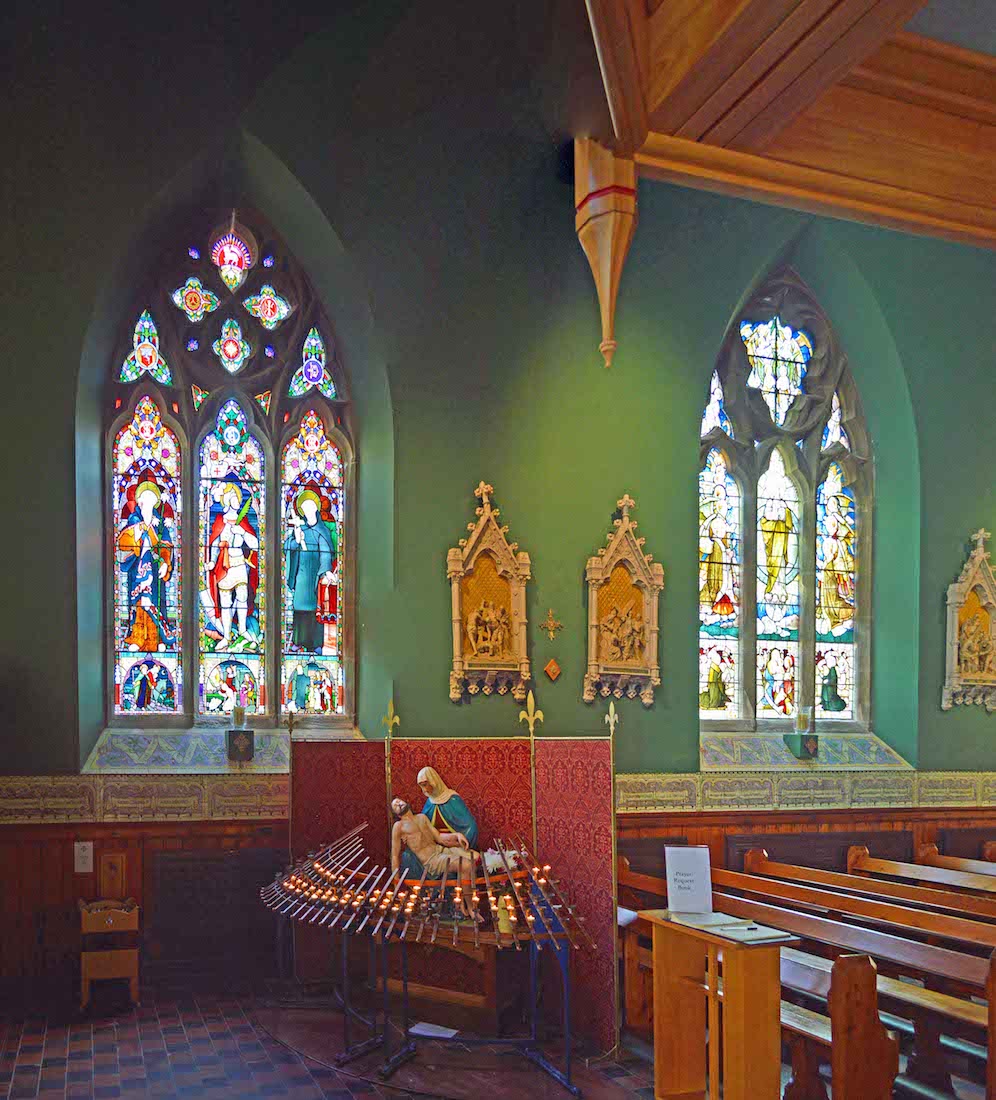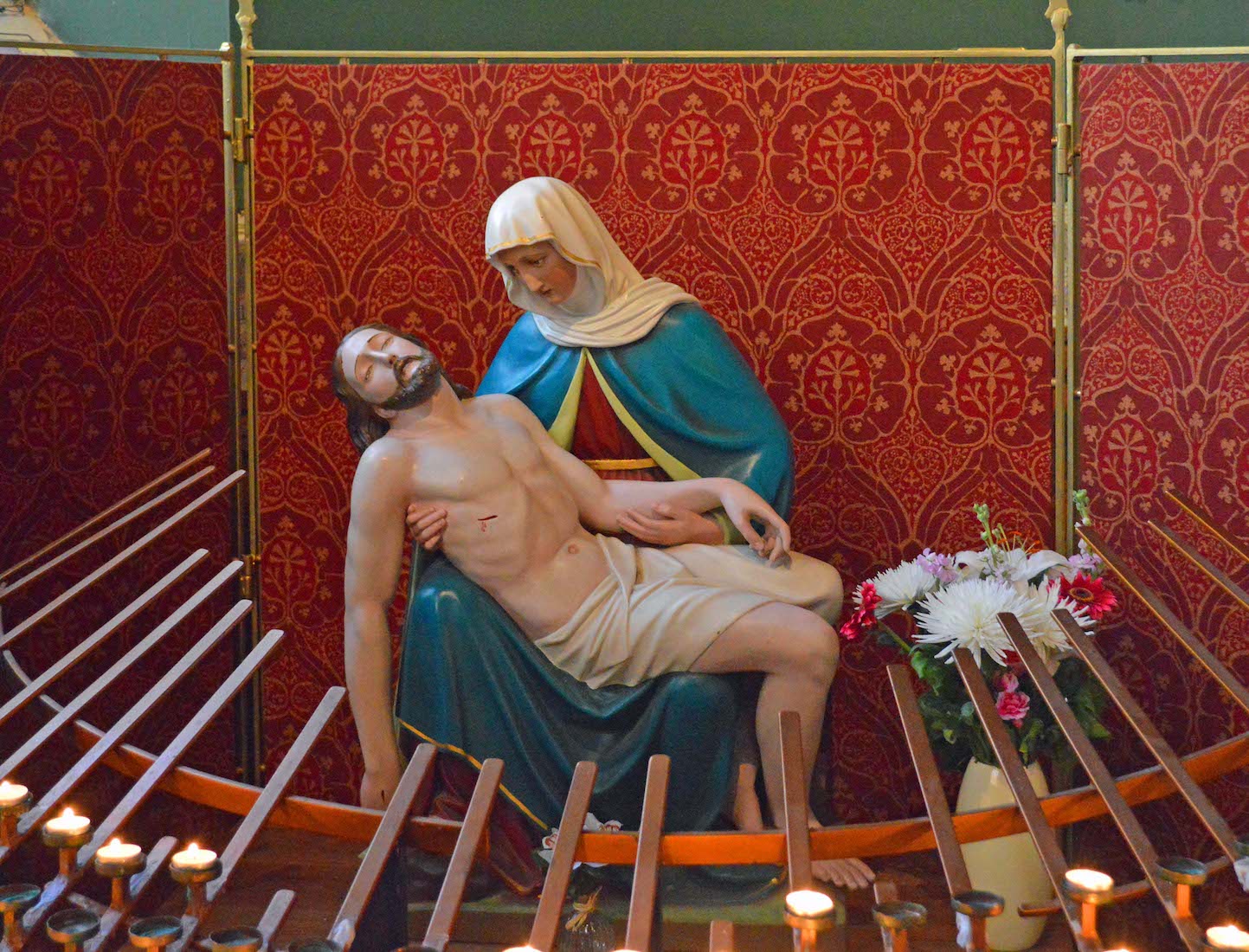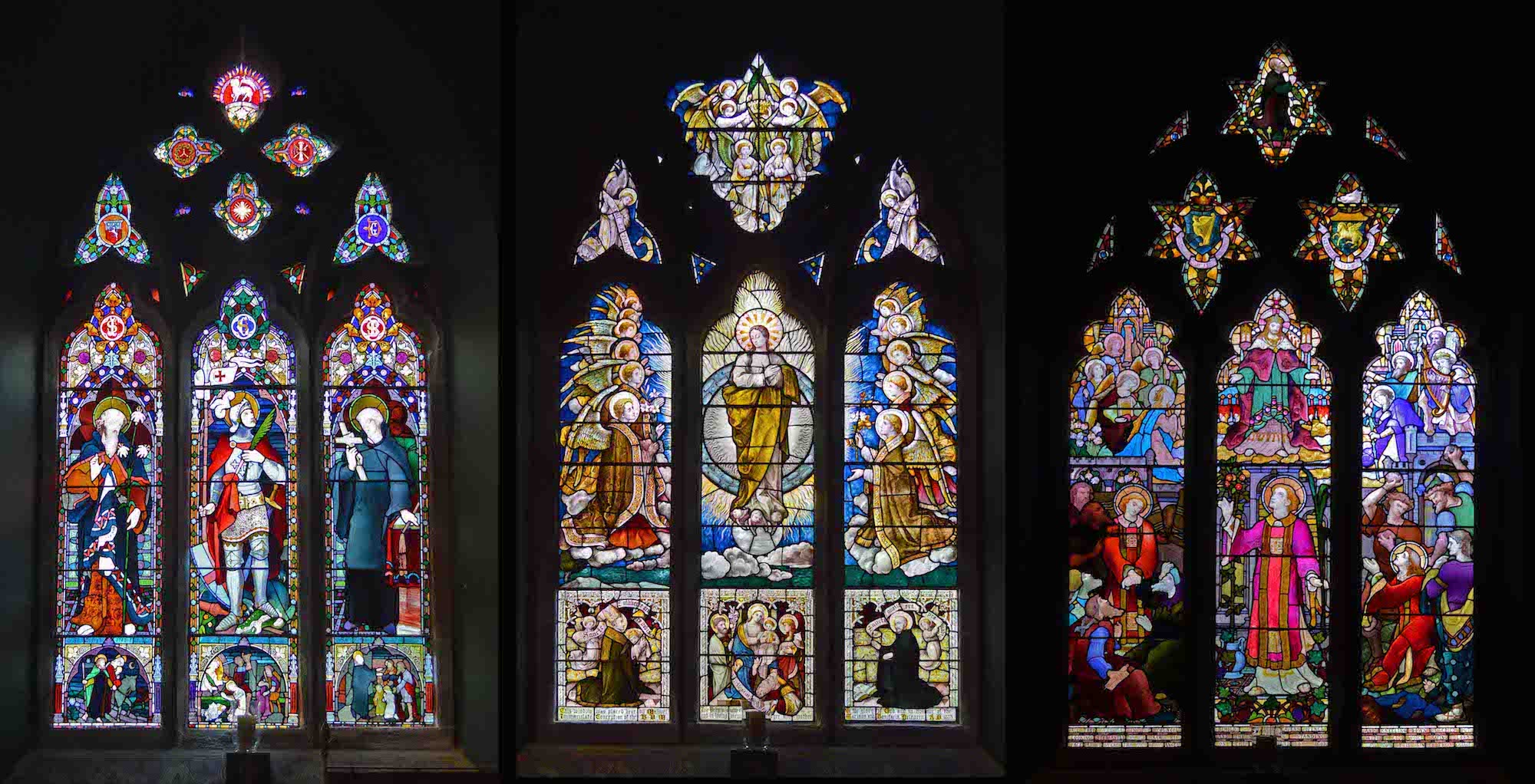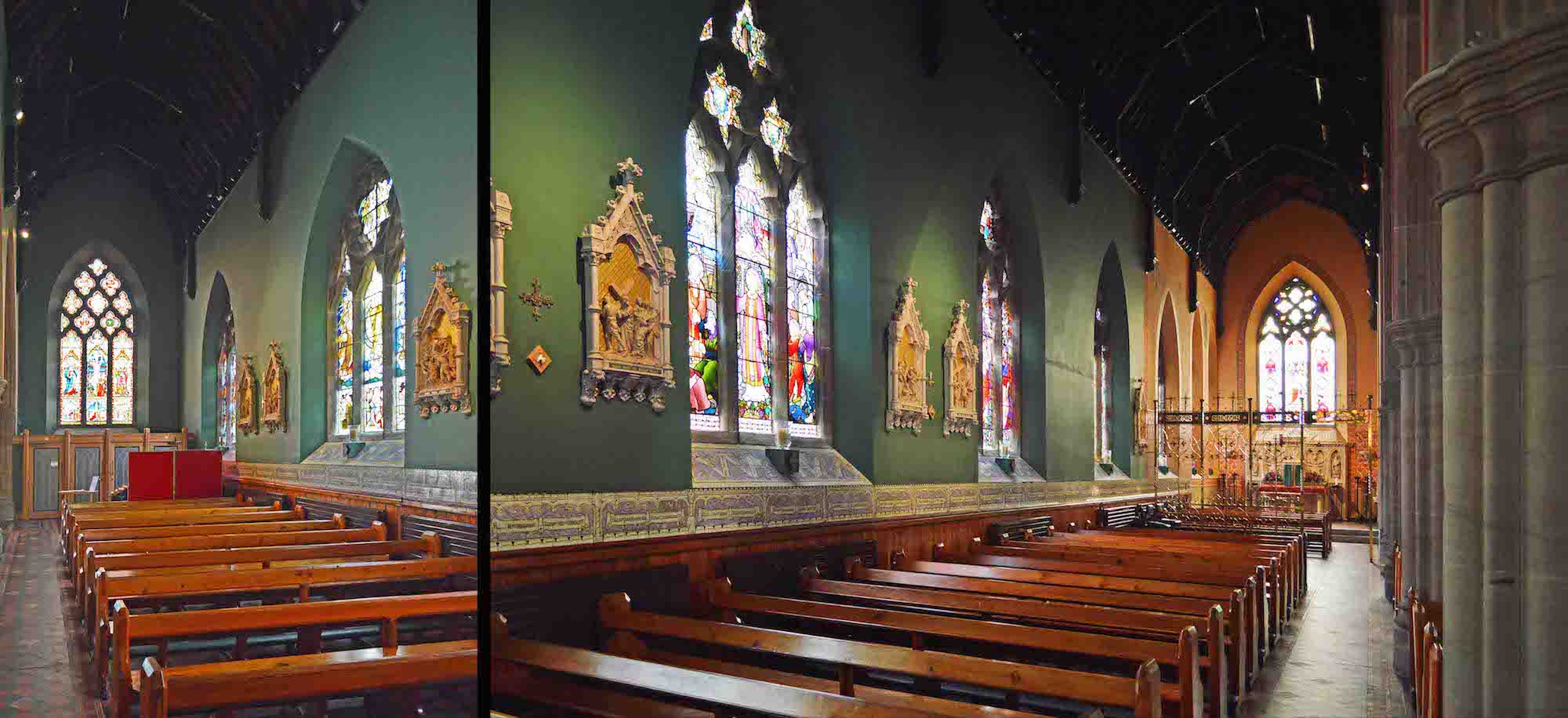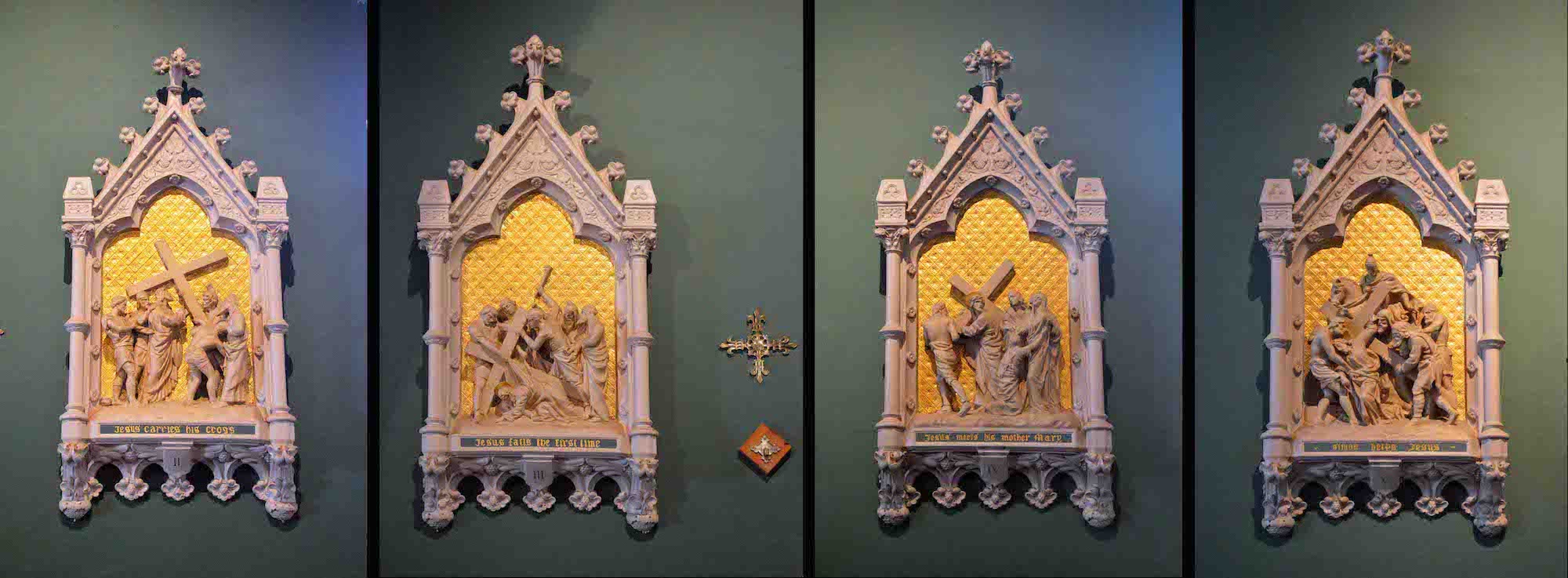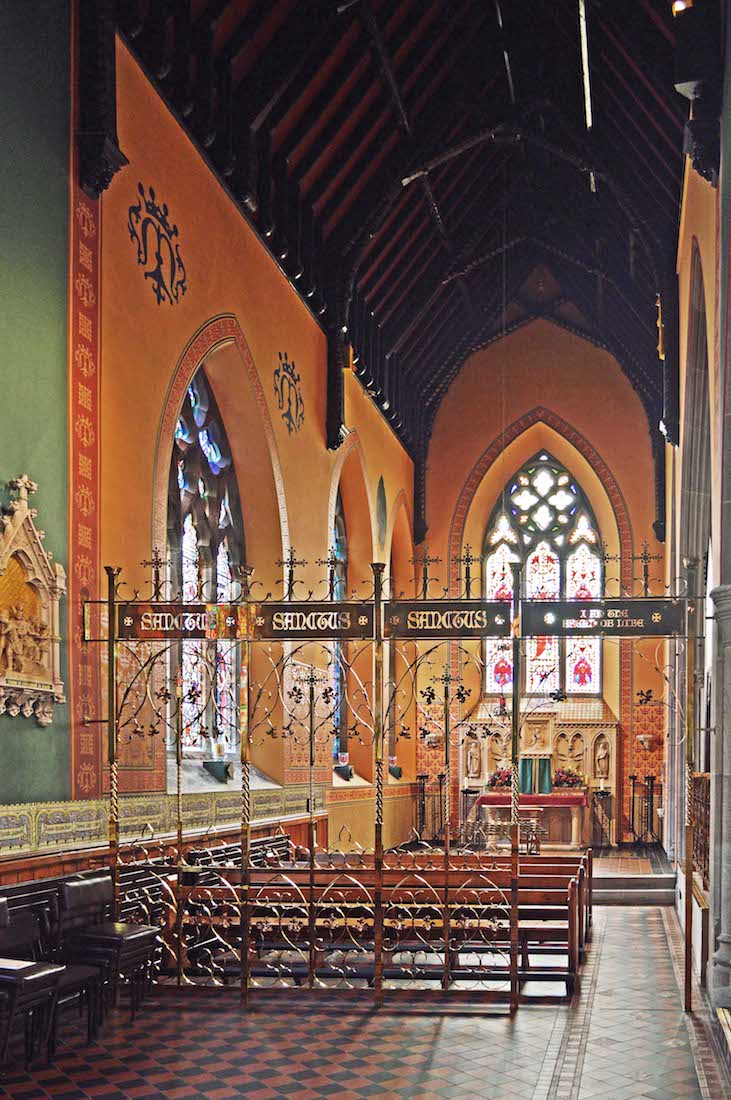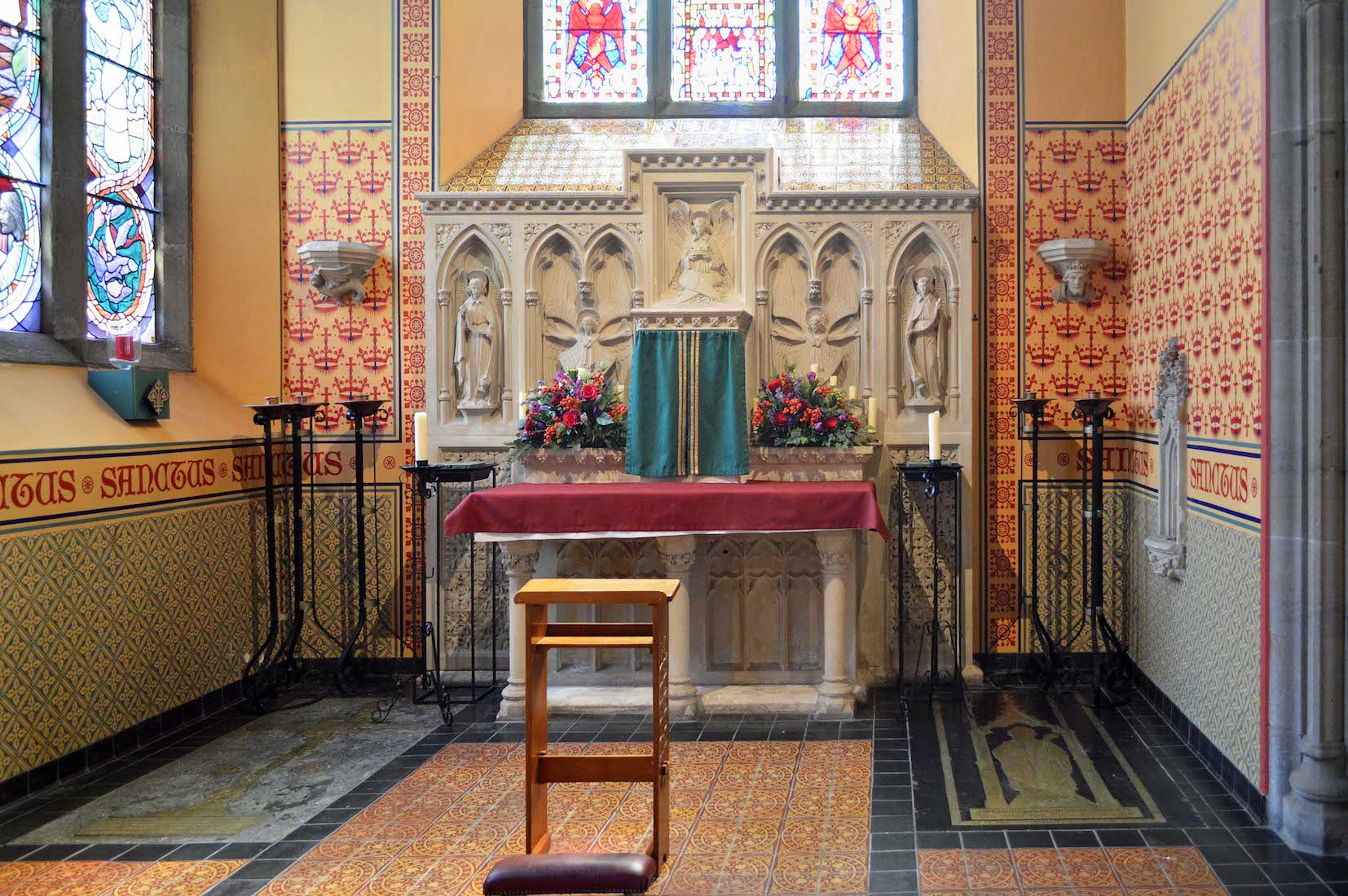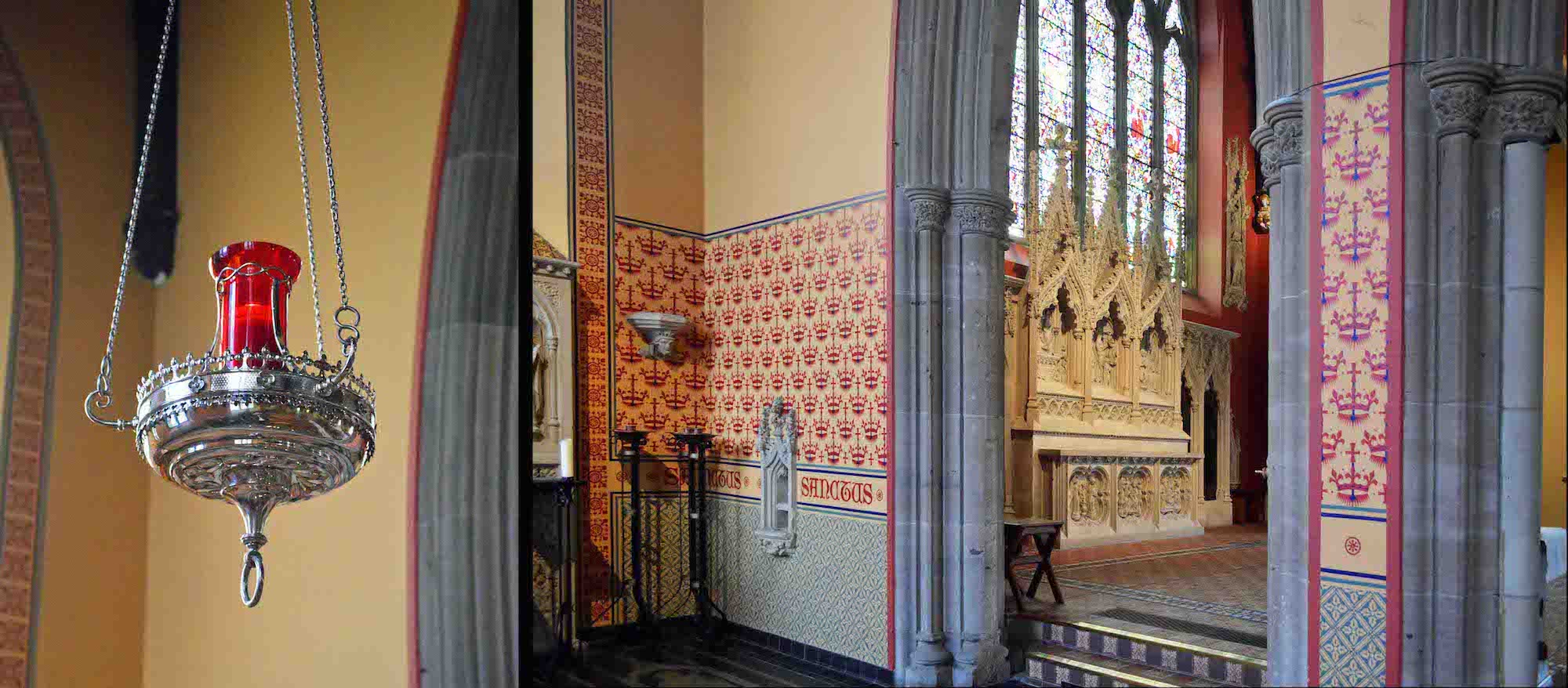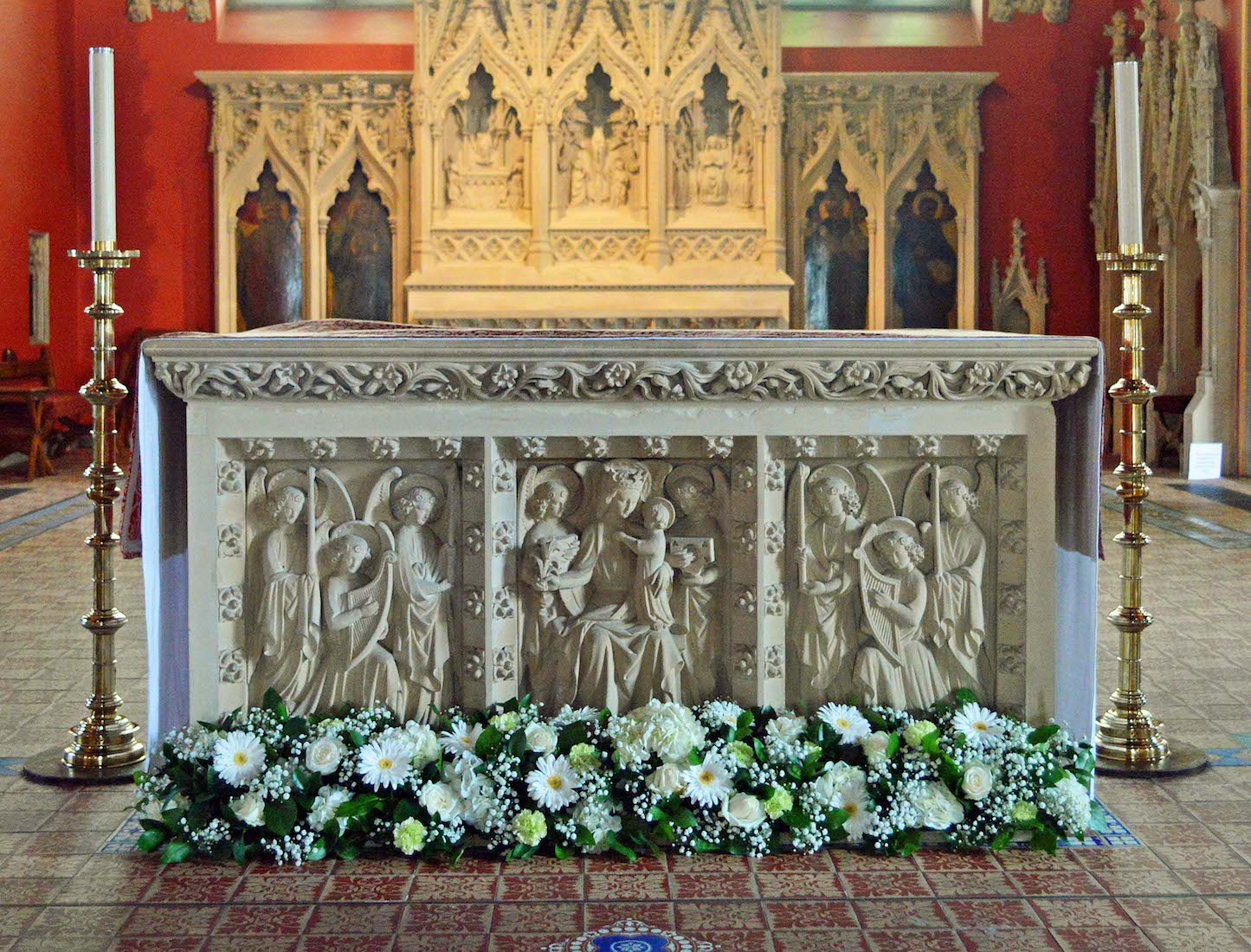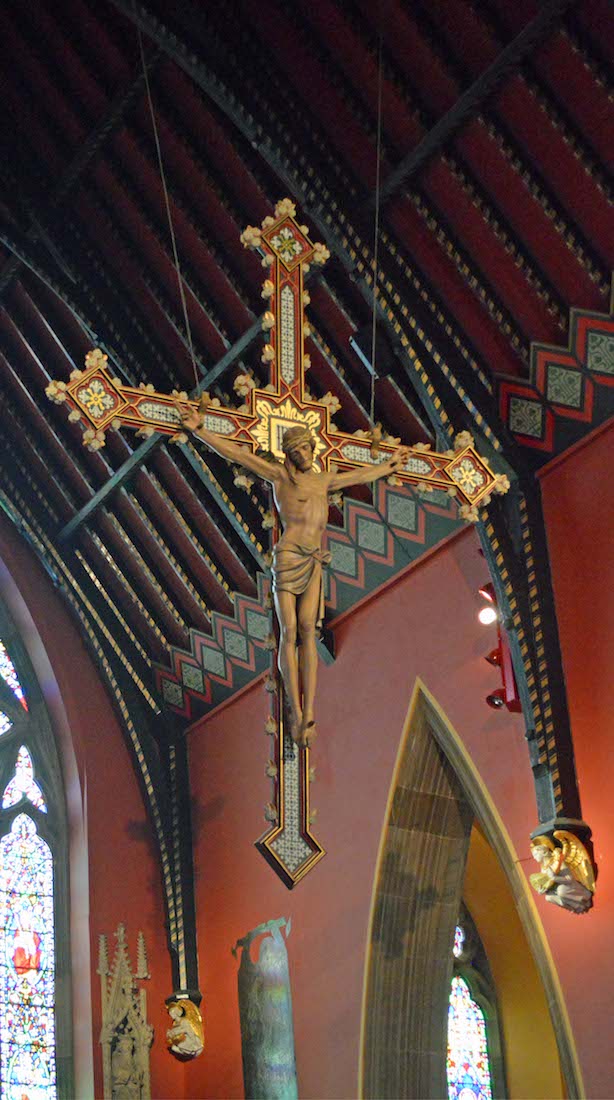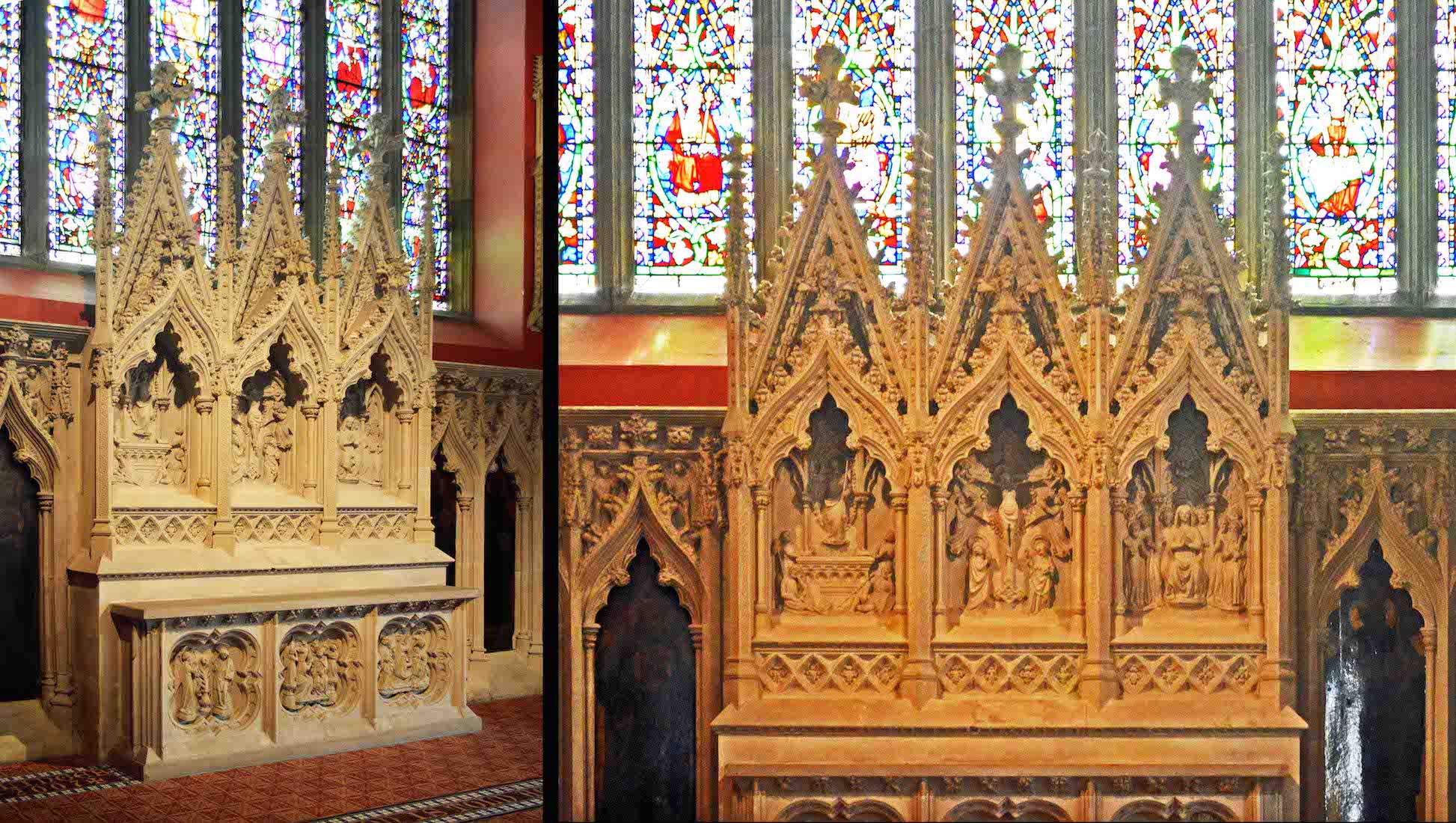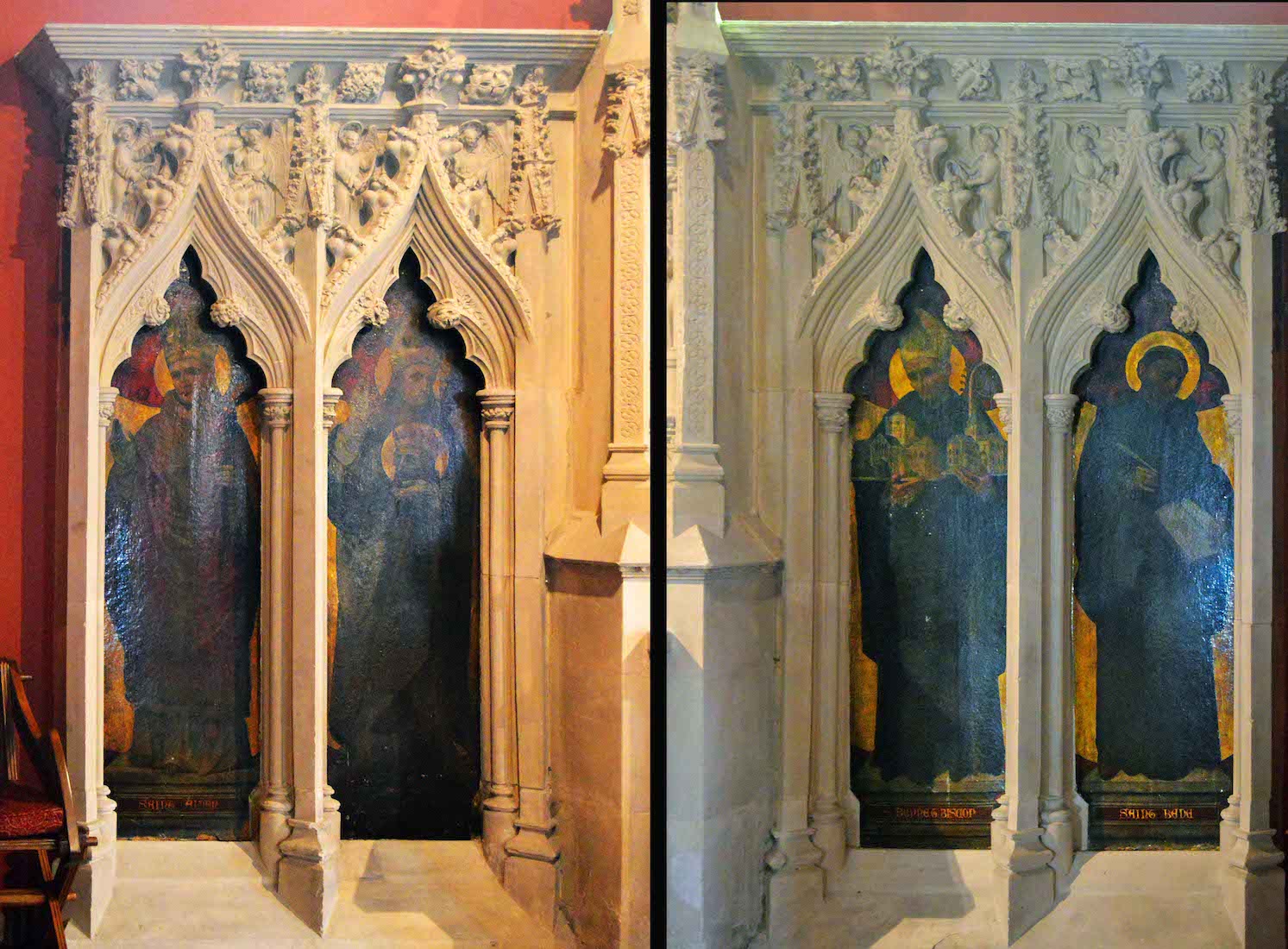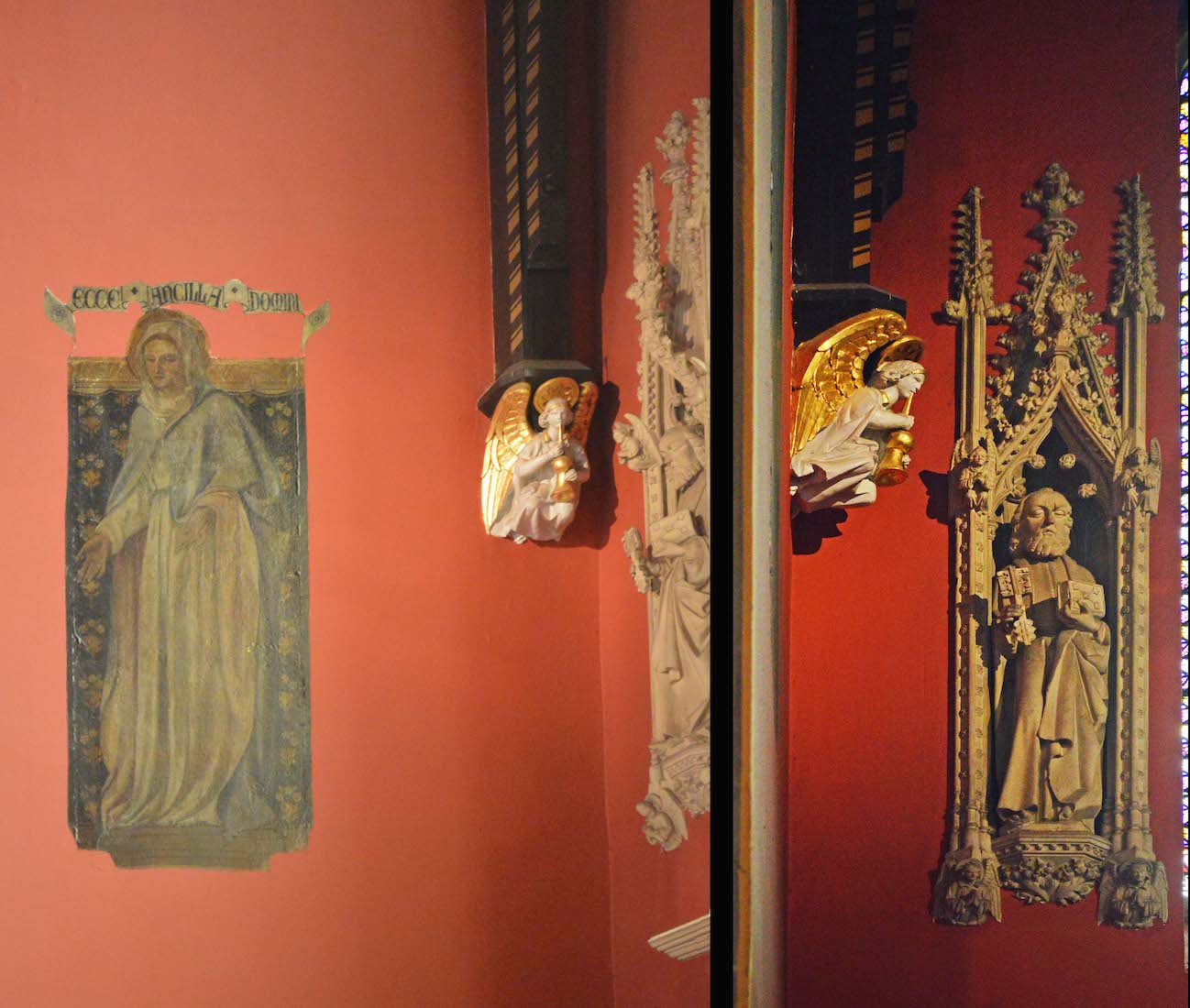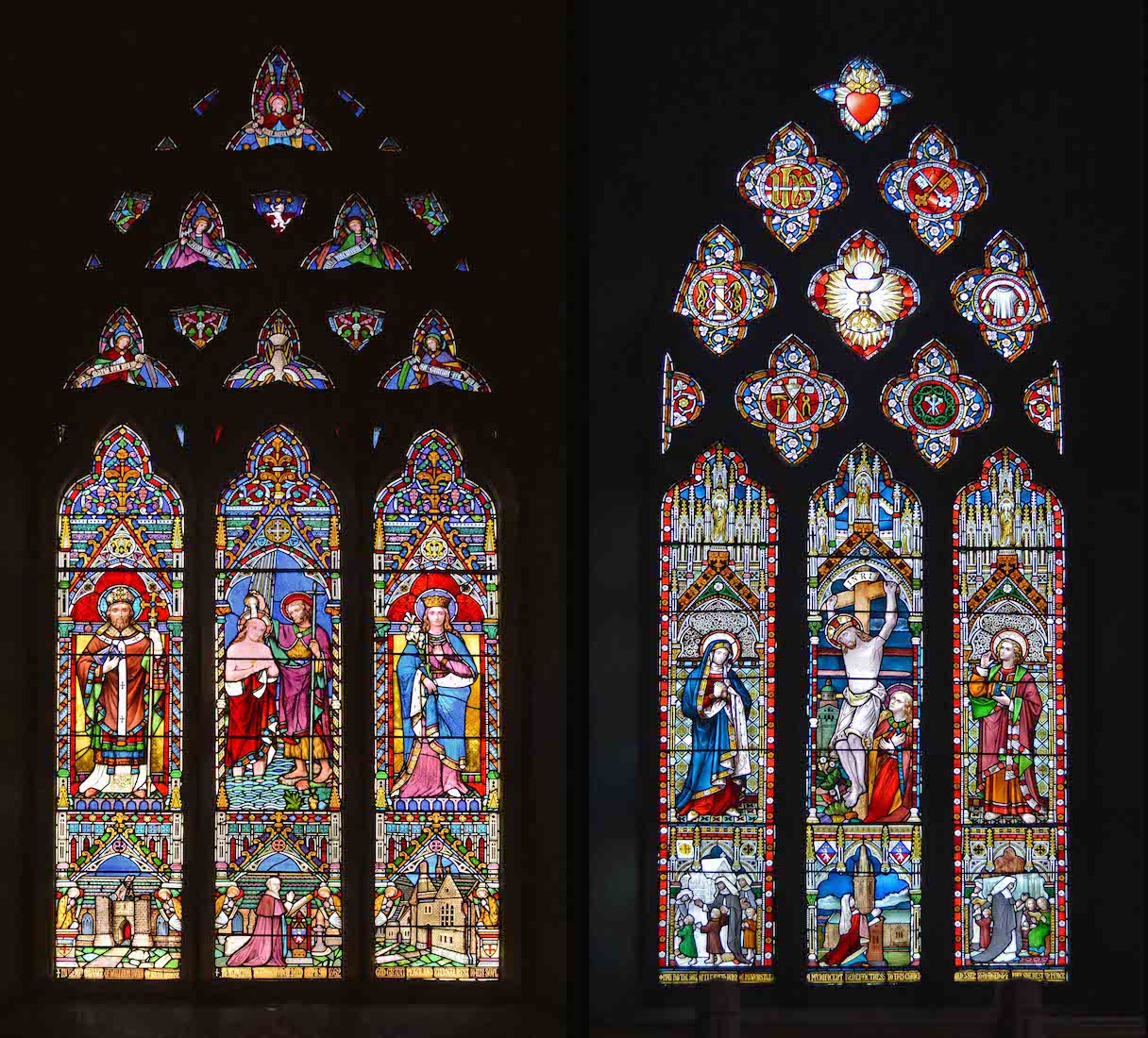
On either side of the great West window (which I suspect has plain glass) are two stained glass windows. The window to the South (15) (left) pictures Our Lady, St William and John the Baptist: the lower panels show the church being built. The window to the right (13) depicts the Crucifixion (Elizabeth Dunn memorial window). PLAN
22. ENTRY AND STOUPS
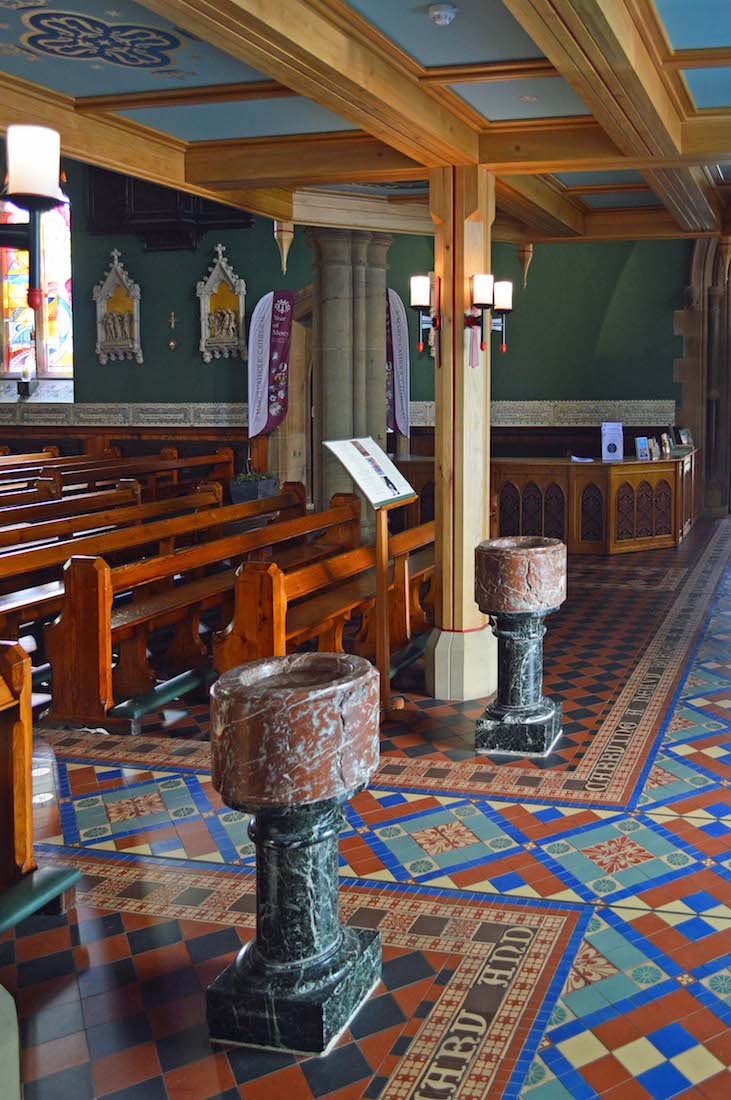
This views looks back across the entry and the two stoups. Notice the text in the floor tiles. In fact, there is also text along the far wall. The stoups hold holy water – water which has been blessed by a priest. As a reminder of baptism, Catholics dip their fingers in the holy water and make the sign of the cross when entering the church.
23. NAVE NORTH WALL
We turn and look across to the North wall of the nave. The West entry and confessionals are to our left. Ahead is a ‘Pietà’ scene. We shall find that the North wall of the nave has three features: the windows, the Stations of the Cross, and the continuous line of text just below the windows.
24. PIETÀ
The word means ‘pity’ in Italian, but commonly refers to a painting or sculpture of Mary holding the body of Jesus after the Crucifixion. The sculpture by Michelangelo is the most famous version, and is housed in St Peter’s Basilica, Vatican City.
25. NORTH NAVE WINDOWS I
The main panels of these first three windows show (from left) : • St George, St Joseph and St Benedict (12); • The Assumption of Our Lady (11); • St Stephen, the first martyr, being questioned by the council and then stoned to death (10). The window at right has an unusual shade of magenta which appears in several Cathedral windows.
26. NORTH NAVE WINDOWS II
The main panels of these final two windows on the North wall show: • St Peter receiving the keys of the kingdom of heaven (9); • St Thomas: doubting Thomas says ‘My Lord and my God’ (8).
28. STATIONS OF THE CROSS
The Stations of the Cross numbered II to V are pictured separately here. They show: II Jesus carries his Cross; III Jesus falls the first time; IV Jesus meets his mother Mary; V Simon helps Jesus. The Stations are attractive with the sculpted scenes against a golden diamond grid background. Station III shows one of the Cathedral’s consecration crosses alongside.
30. BLESSED SACRAMENT CHAPEL WINDOWS
The Blessed Sacrament Chapel has three stained glass windows on the North (left) side. These modern windows are very attractive, and unusual in design. They show (from left): • The Last Supper; the works of charity (7); • The Crucifixion and Empty Tomb (6); • The Road to Emmaus; Peter jumping into the water (5). These windows replace earlier stained glass destroyed in the Second World War.
31. CHAPEL EAST WINDOW
According to a Cathedral description, this Eastern window (4) in the Blessed Sacrament Chapel shows Jesus as the Bread of life, with Seraphim on either side. At the top are the symbols of the Four Evangelists, and the main central panel shows the Risen Jesus. The two trefoils above the outer lancets have blue symbols which may signify bread, but if so, the choice of colour is curious.
32. CHAPEL ALTAR
Behind the simple altar and tabernacle is a lovely screen with five angels. At right is a memorial brass of Bishop William Riddell. At left is the burial slab from the grave of Fr John Worswick (d.1843), who is buried under the main sanctuary. The project to build St Mary’s was overseen by him and by Fr (later Bishop) William Riddell. It was first a parish church and became the Cathedral of the newly created diocese in 1850..
33. SANCTUARY LAMP AND VIEW TO THE SANCTUARY
The lighted sanctuary lamp indicates the presence of the Eucharistic Elements in the tabernacle. Notice too the repeated word ‘Sanctus’ around this chapel. A side doorway leads us through to the main sanctuary
34. ALTAR
Many cathedrals have a nave altar and a high altar. St Mary’s has a single altar which is placed forward towards the nave. The altar is beautifully decorated with three sculpted panels: a central panel with Virgin and Child, and two outer panels with worshipping angels. A tall candlestick stands on either side, and a white floral display with contrasting greenery lies along the base.
35. GREAT EAST WINDOW
The window in the main sanctuary is the Great East window (3). It shows the Tree of Jesse (the genealogy of Jesus from Matthew’s gospel), linking Christ to the kings and prophets of the Old Testament. There are some obstacles to photographing this window!
36. THE ROOD CROSS
The rood cross hangs above the altar at the front of the nave. A rood or rood cross, sometimes known as a triumphal cross, is a cross or crucifix, especially the large Crucifixion set above the entrance to the chancel of a medieval church. Rood is an archaic word for pole, and was originally the only Old English word for the instrument of Jesus Christ’s death.
37. REREDOS
This reredos and the predella (platform) on which it sits, was originally the site of the high altar. In the mid-60s, Vatican II decided that it was best for the Mass to be administered by a priest facing the congregation at an altar which was closer to the congregation. Most Catholic (and Anglican) cathedrals have followed this ruling.
38. REREDOS SIDE PANELS
On either side of the reredos are painted side panels depicting various saints. The outer two are St Aidan and St Bede. Aidan of Lindisfarne (died 651) was an Irish monk and missionary credited with restoring Christianity to Northumbria. The Venerable Bede was an English monk in the Kingdom of Northumbria. He is well known as an author and scholar.
39. ANNUNCIATION, ANGEL AND ST PETER
In the Northeast corner of the sanctuary are three items of interest. The old painting is of the Annunciation in which the angel spoke to Mary. The musical angel is one of many in the cathedral. And the apostle Peter is easily recognized by the keys he carries, remembering Christ’s words concerning the gift of the Keys of the Kingdom (Matthew 16:19).
40. MUSICAL ANGELS
We have already noted the presence of musical angels along the full length of the Cathedral – all praising God from on high!


